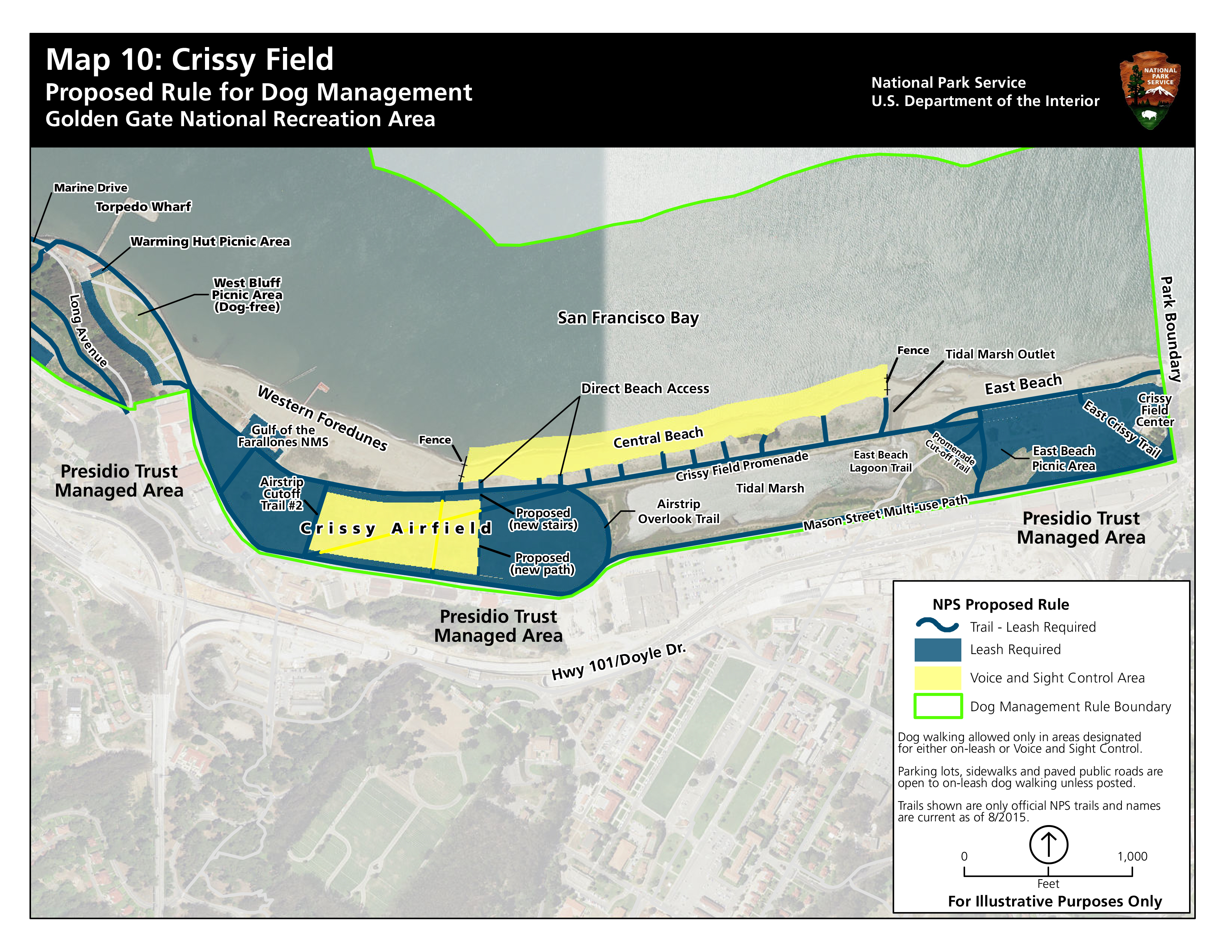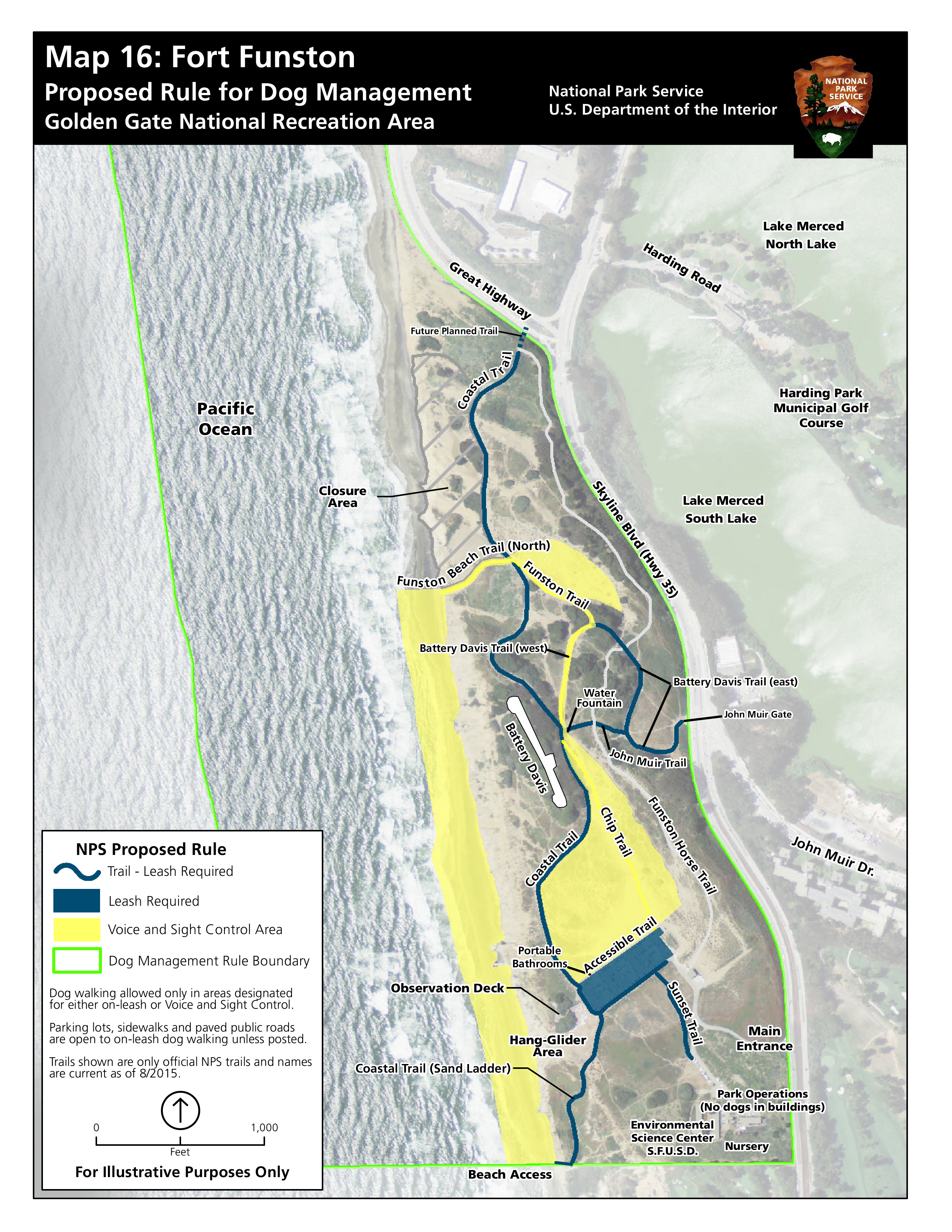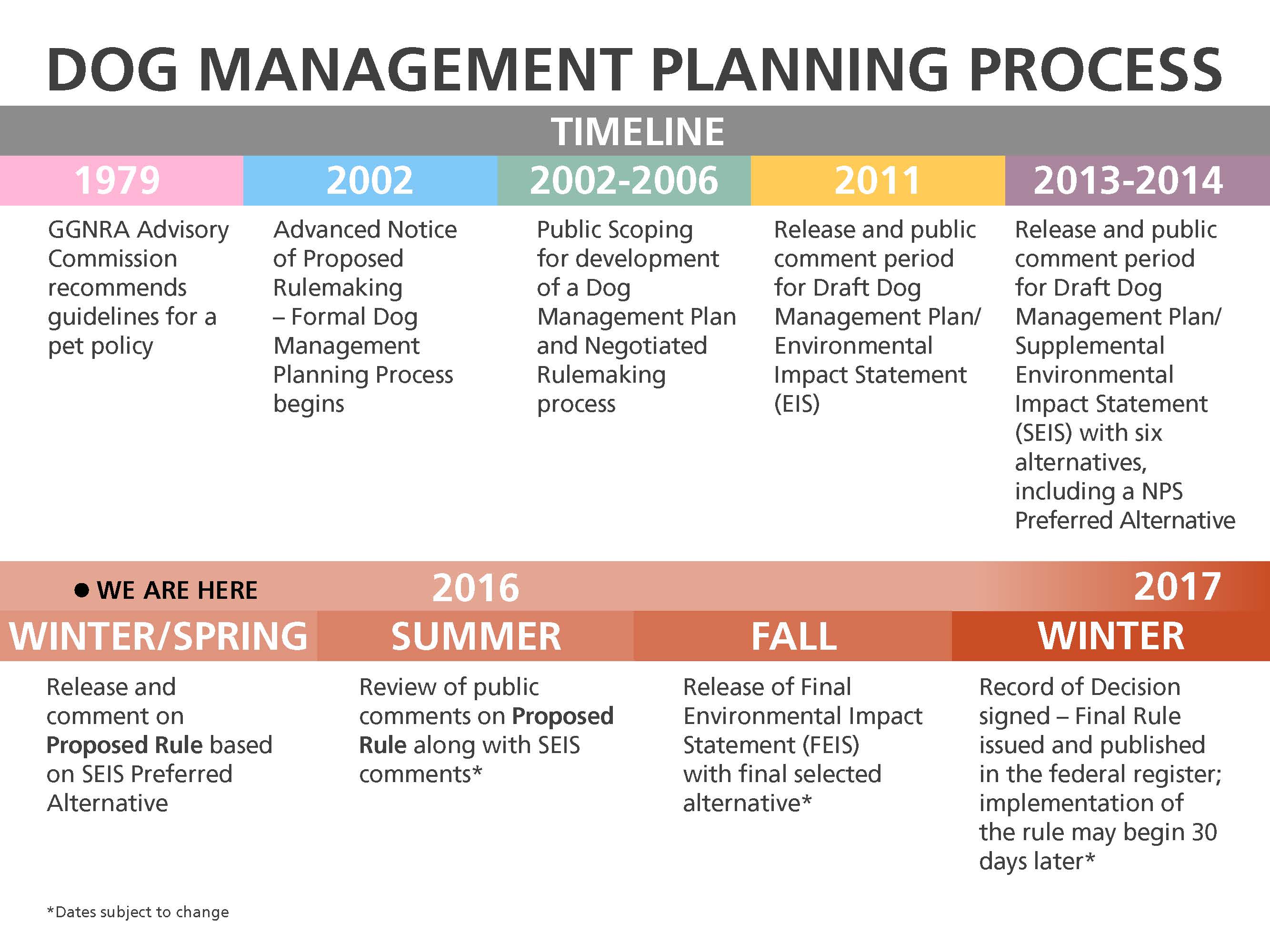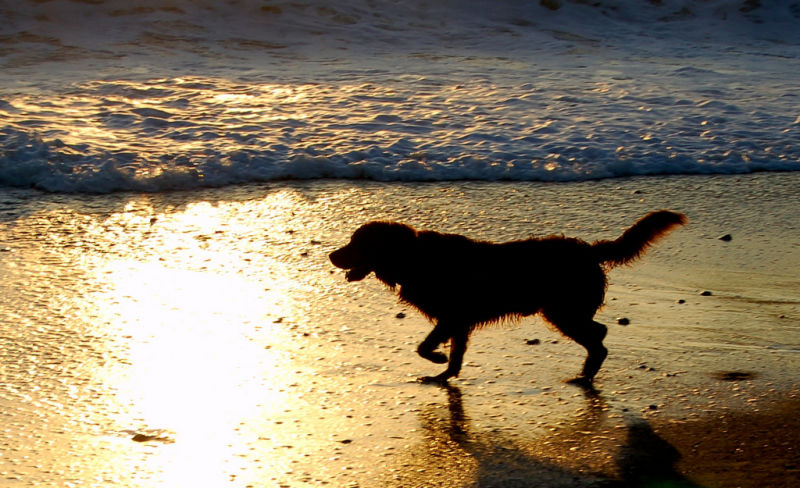Off-leash dogs would be allowed in five locations in the 80,000 acre park, including Fort Funston. The NPS says about one-third of beach mileage would be open to dogs (some off-leash) and about one-third of park trails would be open to on-leash dogs. The area open to off-leash dogs at San Francisco's Crissy Field and Fort Funston would be cut by more than half. In Marin, off-leash access would be limited to a portion of Fort Cronkhite's Rodeo Beach. All picnic and beach areas would include areas where dogs are not allowed. Commercial dog-walking would be limited to specific spots.
The Details
The full, unexpurgated text of the proposed rule, including details such as the definition of a leash, are here: Special Regulations: Golden Gate National Recreation Area Dog Management. You can also consult the National Park Service's answers to frequently asked questions.
Maps
To make the rules even clearer, you can look at the National Park Service's maps of the affected areas. The maps show where dogs are allowed but must be on-leash and where they can be merely under "voice and sound control."
Here are maps of the two most popular locations:


Your Comments
The National Park Service has extended the comment period on the new regulations through May 25. You can comment online or via mailed letters to:
Superintendent, GGNRA, Dog Management Proposed Rule
Building 201 Fort Mason
San Francisco, California, 94123.
You can also call (415) 561-4728 with questions.
Public Meetings
The National Park Service will hold public meetings next month to discuss the rules -- two each in San Francisco, Marin and San Mateo counties.
On KQED's Forum, a number of callers commented that it seems at times like park officials don't take the public's comments into account despite all the time spent gathering them. Andrea Buffa, co-founder of Save Our Recreation Areas, argued that when they counted the submitted comments that were made publicly available, it was 3-1 against the proposed plan.
Chris Lehnertz, superintendent of GGRNA, says the park service doesn't count the number of people on each side but rather looks for general trends and any new ideas. She also said the agency gets plenty of concerned (and angry) comments from both dog owners and from people unhappy with dogs impacting the park's environment.
"The job of the National Park Service is to listen to all voices, not just the loudest voices," said Lehnertz.
Enforcement
The NPS proposal includes $2.6 million for enforcement, which many commenters feel is lacking.
"We will give people tickets where it's appropriate," said Lehnertz, though she emphasizes that educating people on where dogs are allowed and where they must be on leashes is the first priority before simply ticketing them.
To that end, one idea includes creating physical barriers or signs to delineate different areas for people actually at the parks, without the maps in their hand.
If approved, the new dog rules could go into effect as early as the end of the year -- though it will probably take longer than that.



